Caving in Tokyo: Then and Now
There was a time not so long ago when visiting a tourist cave was a popular way to spend a lazy weekend. Rewind to the early 1980s and there were seven such caves operating in Tokyo now sadly more than half of them have closed down. Many of the limestone caves become unprofitable due to declining visitors and costs associated with maintaining them. In other cases the caves posed a risk of collapse.
Some readers would no doubt be familiar with Tokyo’s best-known and oldest tourist cave the Nippara Limestone Cave but most probably haven’t heard of the Odake and Mitsugo caves in neighbouring Akiruno City. The following list covers these two smaller tourist caves as well as three others now permanently closed and another which is restricted to research organisations. In addition there are two other non-tourist caves, one of which I wrote about earlier this year namely the Nippara Mitsumata Do (Kanto’s longest cave) and the little known Kawanori Cave where you can enjoy some real caving.
.
1. Yozawa Cave 養沢鍾乳洞 – Akiruno City
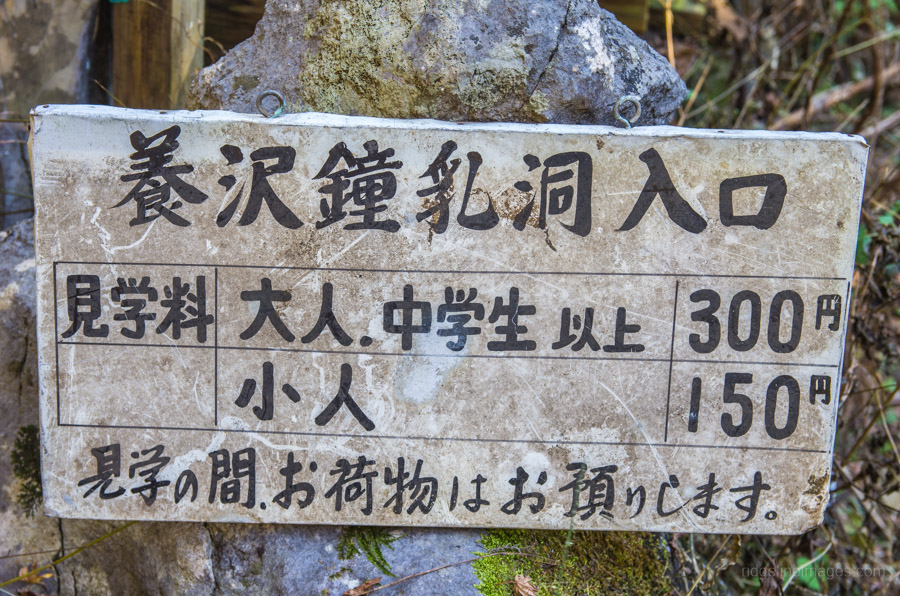
Old entry sign Yozawa Limestone Cave.
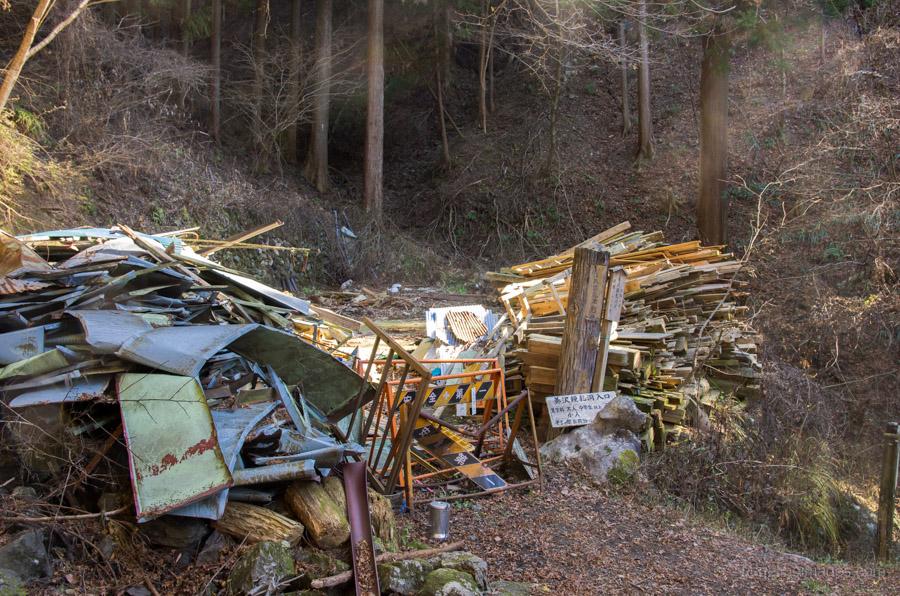
Demolished former cabin at Yozawa Limestone Cave in December 2014.
In Paul Hunt’s 1988 Hiking in Japan guide he describes the Yozawa Cave as small and muddy and must be explored with candles or a flashlight. The cave was also vertical, with the three steps descended by means of rough-hewn ladders and chains. Yozawa Cave was closed in late 2000 owing to a decline in visitors and the risk of collapse. By the time I visited the site in late 2014 the reception cabin at the cave had been completely bulldozed. Like the Kurasawa Cave it was 30-minute hike in from the nearest bus stop.
Length: 50 m (164 ft) Opened: 1933 Status: Closed in 2000
2. Odake Cave 大岳鍾乳洞 – Akiruno City
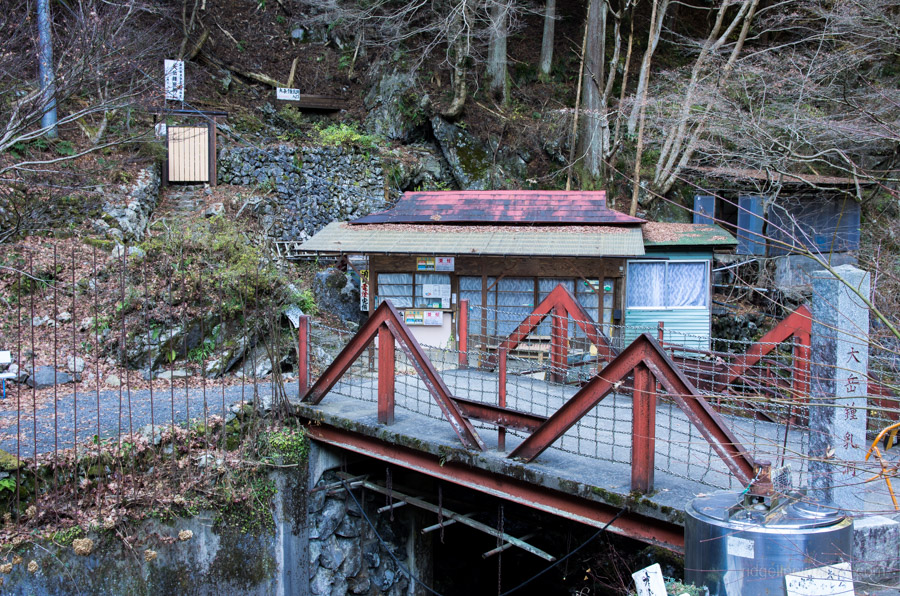
Odake Limestone Cave entrance.
The Odake Cave has been under the management of the same family since its discovery in 1961. The original length of the cave was 180 metres but over the years new sections have been unearthed though the area tourist area is restricted to around 300 metres. The cave has been designated as a natural monument by the Tokyo Metropolitan Government. When I tried to visit the cave on weekend a few years ago it was closed so I would suggest calling before making the trip out.
Length: 1,000 m (0.6 mi) Opened: 1962 Status: Open
3. Mitsugo Cave 三ツ合鍾乳洞 – Akiruno City
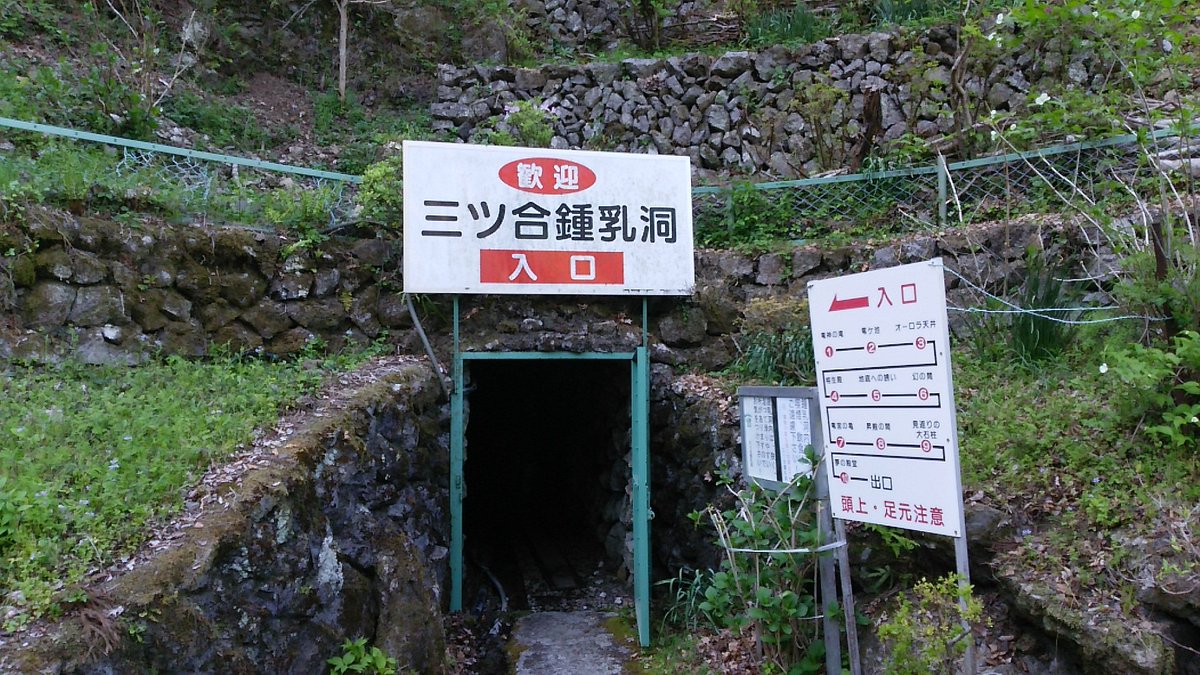
Entrance to the Mitsugo Cave. Image: Tsuiran.jp.
The Mitsugo Cave is a three-layered vertical cave with a total length of over 100 meters. It was the last of the three limestone caves discovered in the area after the Yozawa and Odake caves. Though relatively short and narrow the cave has an assortment of stalactites and stalagmites as well as a small pond. In a similar vein to the Odake Cave call ahead to make sure it’s open.
Length: 120 m (394 ft) Opened: 1970 Status: Open
4. Kurasawa Cave 倉沢鍾乳洞 – Okutama
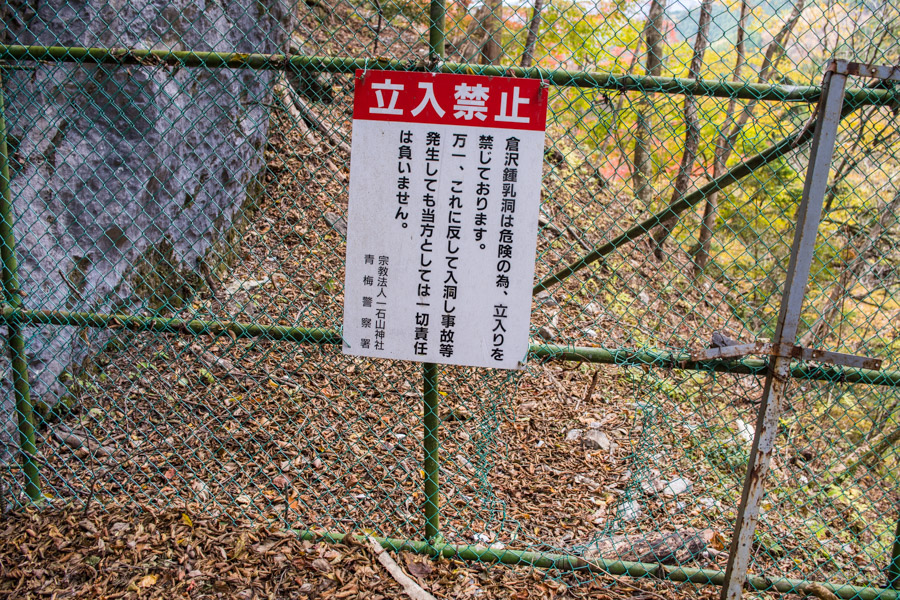
Kurasawa Cave entry prohibited.
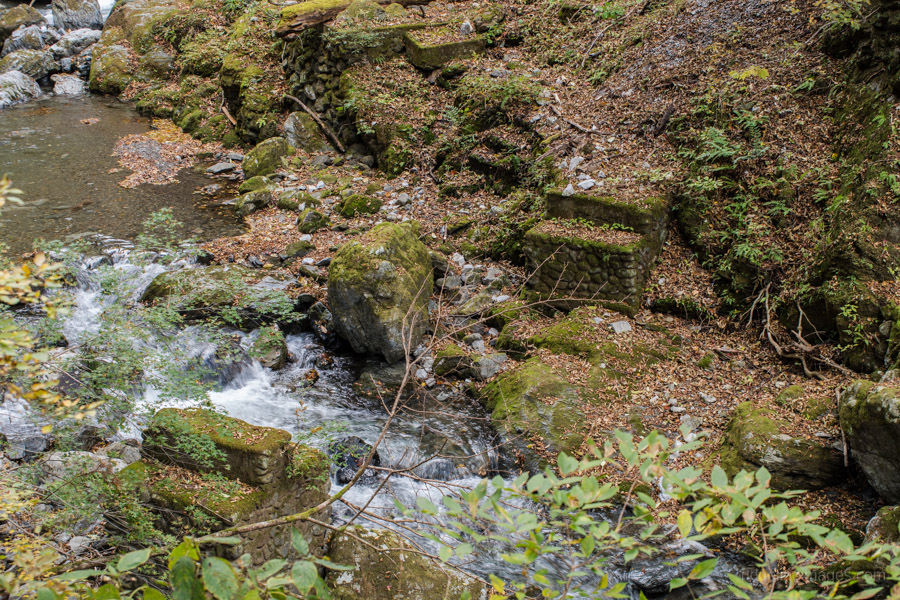
Remnants of the old foot bridge heading up to the cave.
At almost a mile in length the Kurasawa Cave was the longest tourist cave in Tokyo. It opened shortly after World War II and continued until the 1970s – evidenced by ‘cave graffiti’ etched into the walls. The cave has three levels with a small underground lake known as Hyotan Lake ひょうたん池 at the base. Accessing the cave wasn’t easy as it required hiking 60-minute up a forestry road which made it less popular than the nearby Nippara Cave. On a recent visit to the site the access trail was gated with a surly warning not to enter though not enough to thwart this fearless spelunker. It falls under the jurisdiction of the Ishiyama Shine in Nippara.
Length: 1,400 m (0.9 mi) Opened: 1940s Status: Closed late 1970s
5. Omasu Cave 大増鍾乳洞 – Okutama
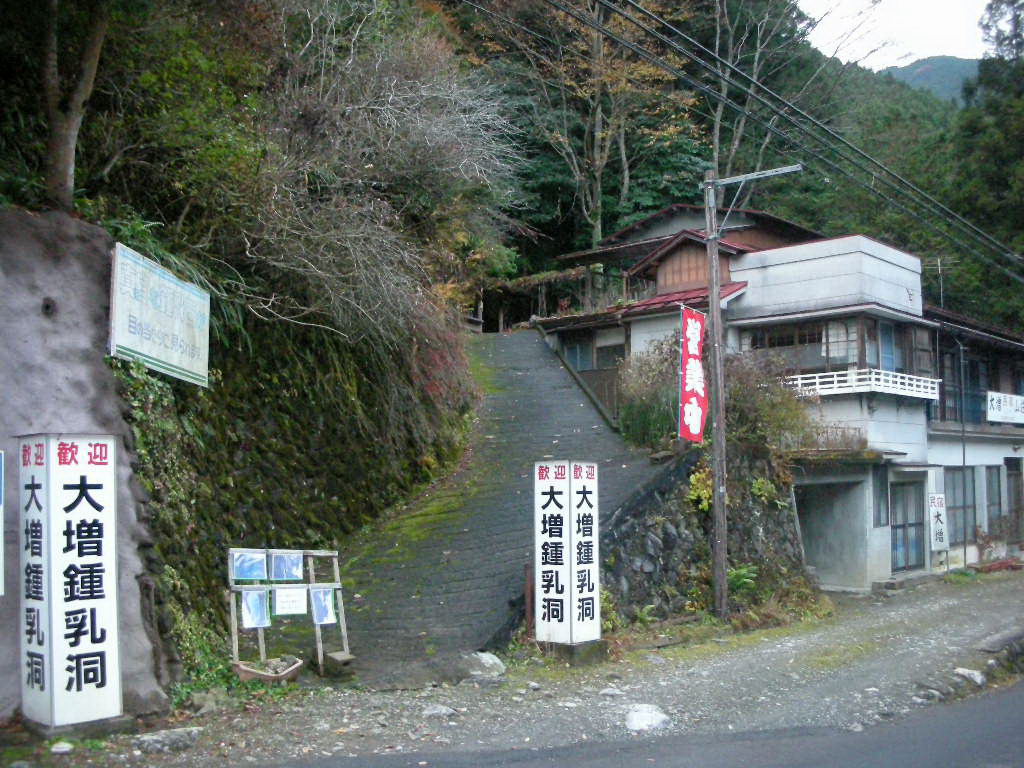
Entrance to the old Omasu Cave. Image: Furonavi blog.
The Omasu Cave was another cave discovered in fortuitous circumstances. Similar to the Odake Cave the landowner uncovered the cavern in his backyard during some excavation work. The length of the cave is relatively short at 45 meters however includes some nice stalactites. Unfortunately, the cave was damaged by a typhoon in September 2011 and remains off limits.
Length: 45 m (147 ft) Opened: 1982 Status: Closed in 2011
6. Aoiwa Cave 青岩鍾乳洞 – Tabayama Village
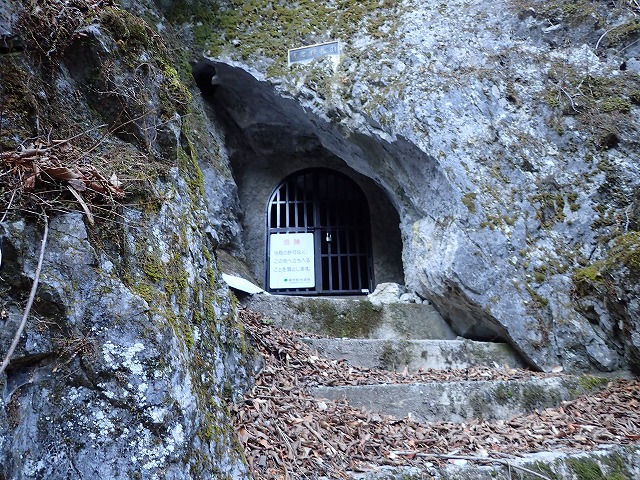
Entrance to the Aoiwa Cave. Image: Blogspot mtgd3chan.
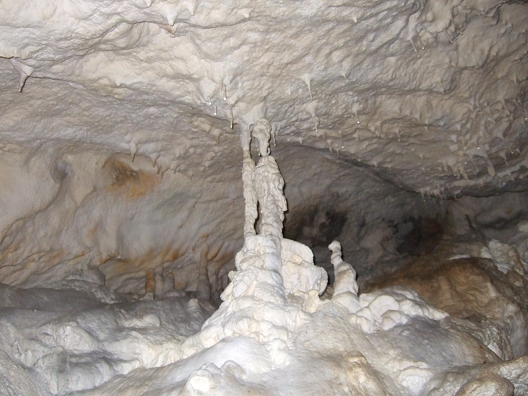
Pillars inside the Aoiwa Cave. Image: Blog Goo heppoco-2005.
Resting just inside Yamanashi though managed by the Tokyo Metropolitan Bureau of Waterworks is the Aoiwa Cave. In days past there were regular guided tours organised through the nearby Sanjonoyu Lodge however since 1998 only academic research organisations with special permission can enter. The two-layered limestone cave system has wide array of stalactites, stalagmites and pillars. The cave was designated as a natural monument by Yamanashi Prefecture in 1962.
Length: 740 m (0.5 mi) Opened: Unknown Status: Closed to general public
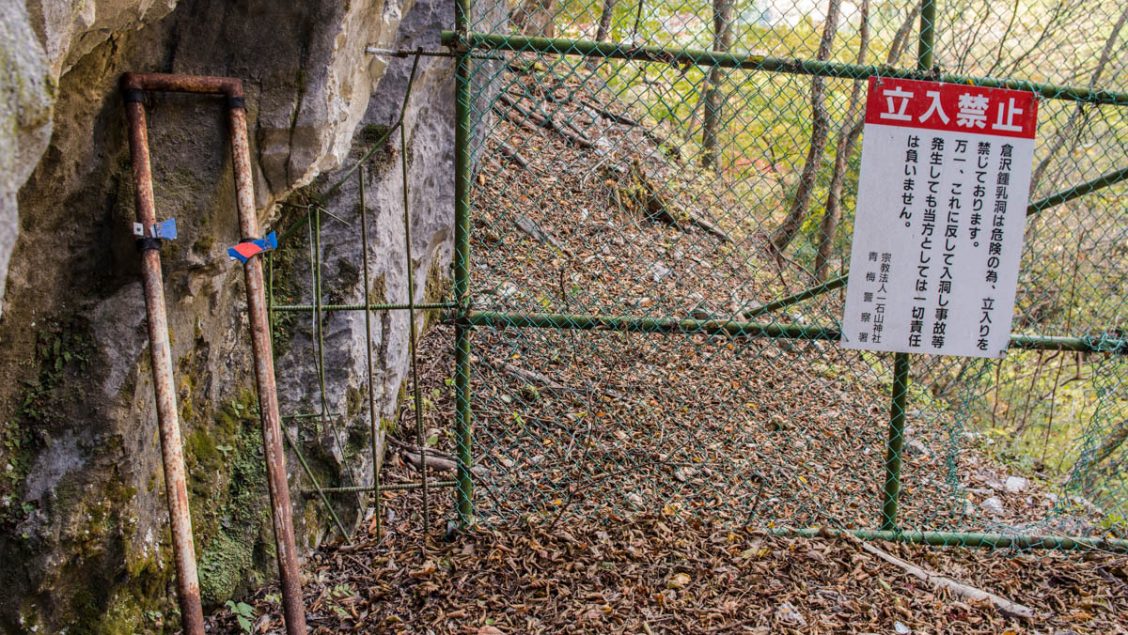
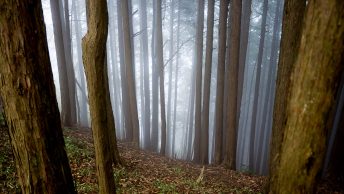




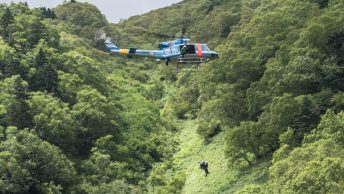
I rode by Odake Cave 大岳鍾乳洞 in May of this year. It was open.
Thanks for that Patrick, I also noticed they were open when I passed by on a Saturday in late April.